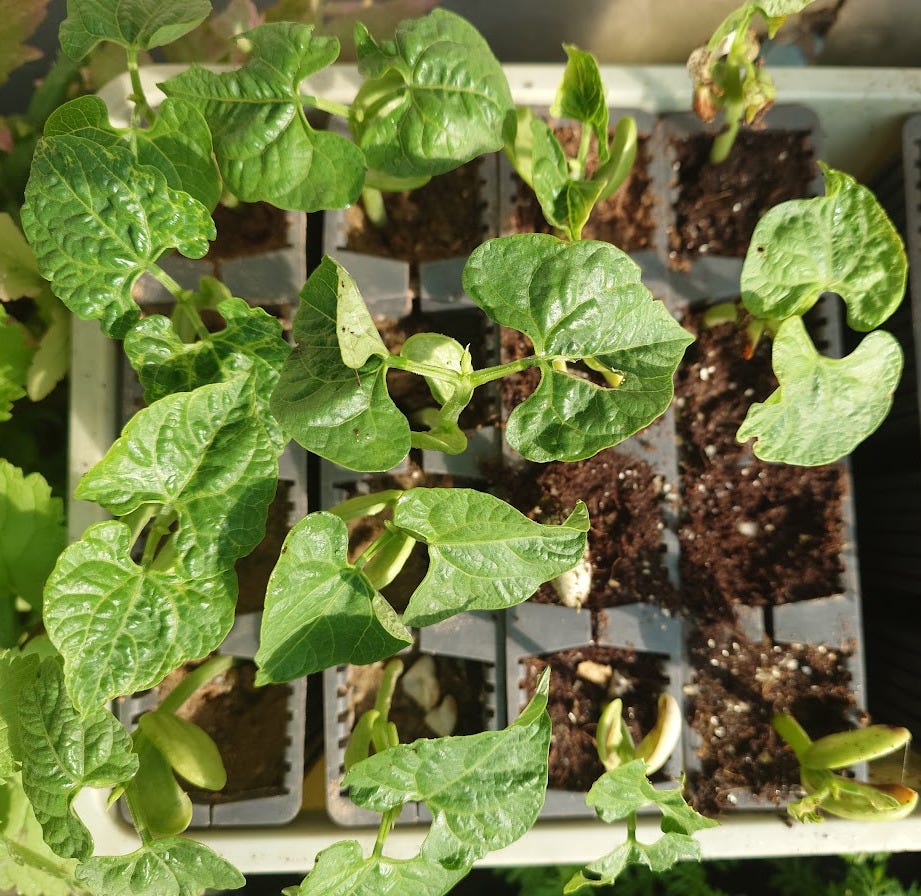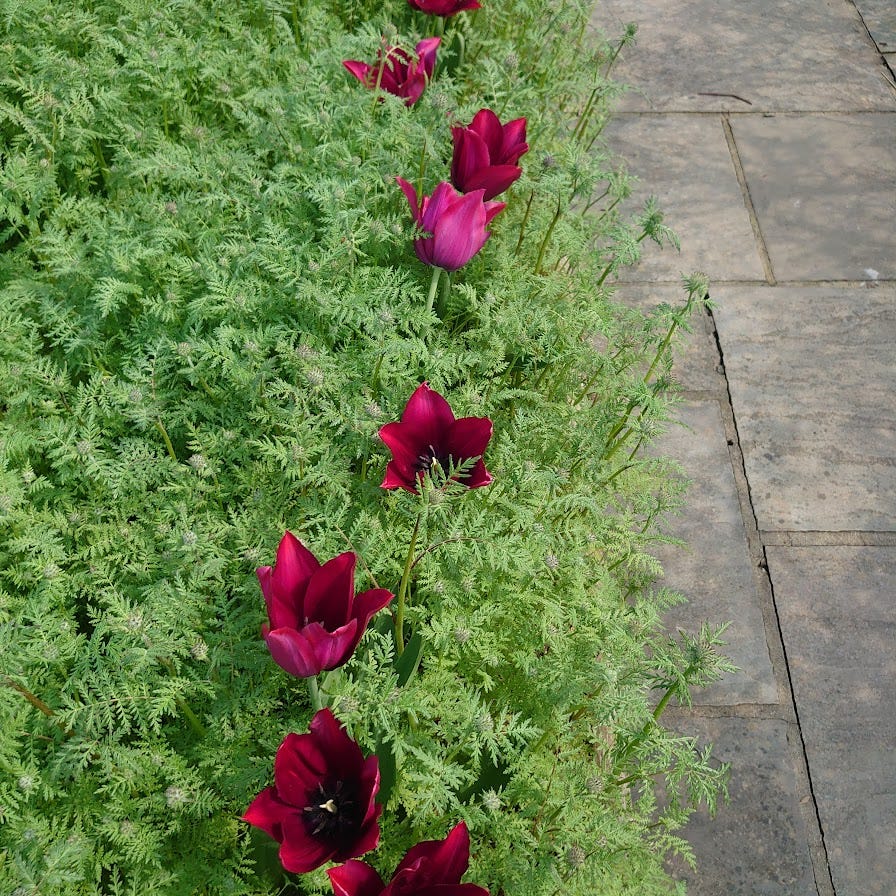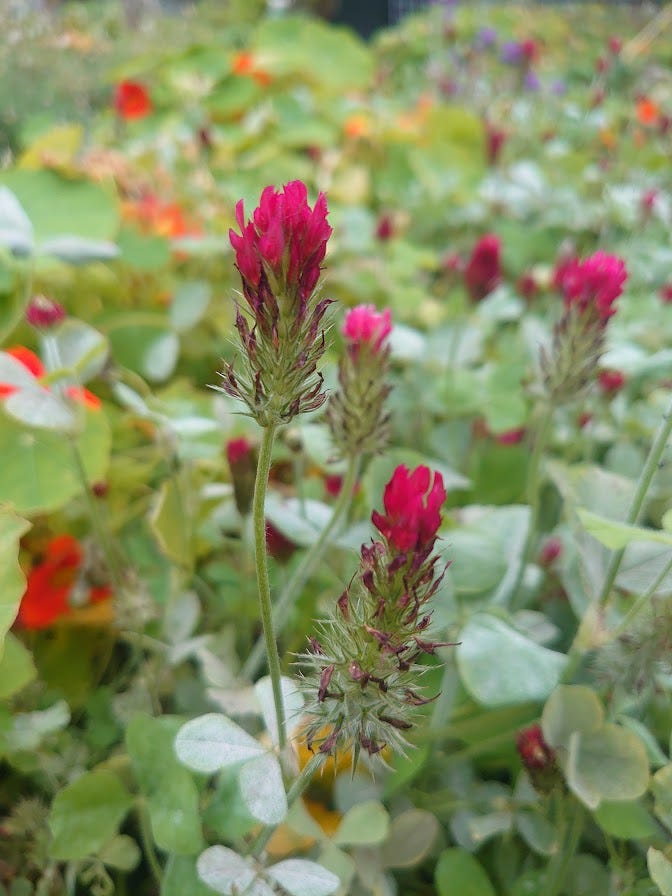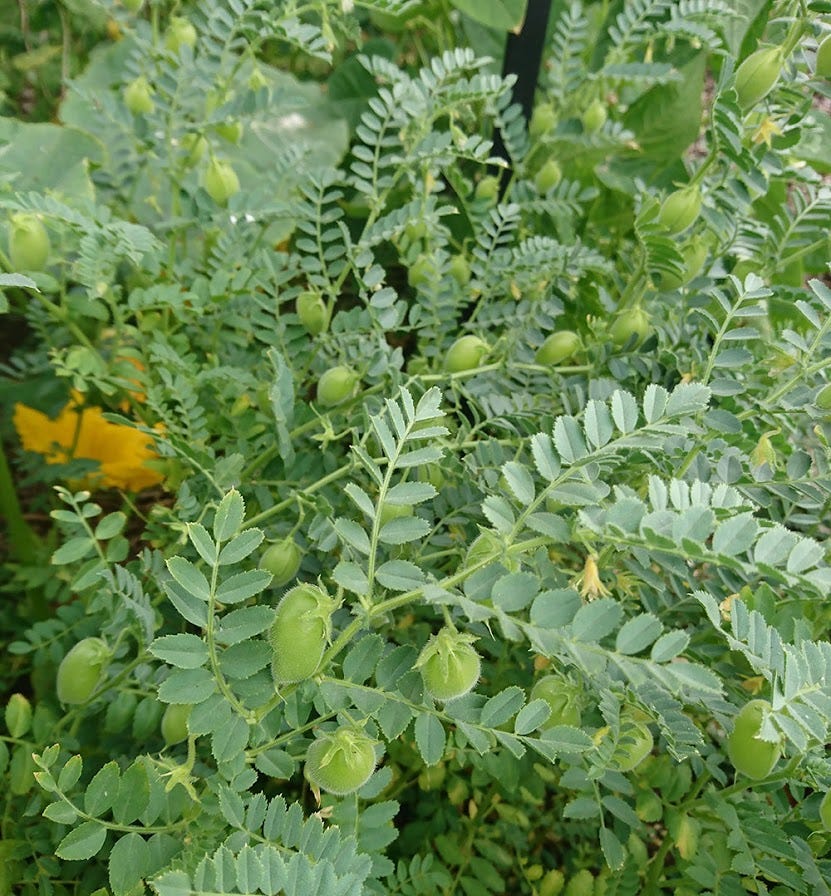Sounds of spring, blossom, and sowing flowers for bees
Spring in the garden, attracting pollinators, creating an easy flowerbed for bees and my sand experiment
🌱 I'm Sally Morgan, an organic gardener and botanist who loves to experiment. Here you can read about matters relating to climate change, sustainability, organic gardening, growing veg and biodiversity, helping you to become a
climate savvy gardener 🌱☀️🌧️❄️🌡️
I love this time of year in the garden. I think we’re at peak apple blossom this week, plus the camassias are in flower along with the tulips. On the sunny days this week, the apple trees were simply buzzing with bees. Such a joyful sight.
And there was more joy when I heard the cuckoo for the first time this year. It was such a relief. The numbers of cuckoos in the UK have declined by more than 30% over the last 30 years, and each year I worry that the cuckoos may not return.
Their migration route to the rainforests of central Africa is long and fraught with danger. There are two main routes, the easterly one through Italy, Algeria and across the Sahara to central Africa, and the westerly option via Spain, the western Sahara and West Africa to Central Africa. The Cuckoo Tracking Project has found that those populations in decline in the UK tend to take the Spanish route. (Swifts take a similar route via Spain and are also in decline).
We have seen the arrival time of many migratory species advance as a result of climate change, but the cuckoo is one species that has remained virtually unchanged - appearing from mid April to early May. Researchers believe this to be a consequence of their arrival time being linked to environmental conditions in Africa, especially the key phase when they leave their West African stopover and cross the Sahara. The timing of the seasonal rains is critical as they cause a flush of new plant growth and an abundance of insects, which allows the birds to build up their reserves of fat and make a successful journey.
Encouraging insects
Gardens around the world are important refugia for wildlife, especially insects, and we all need to do our best in the garden to boost biodiversity. This can be achieved quite simply:
Having a patch where you grow flowers that attract insects
By being less tidy. This could be simply letting the grass grow a little taller and not tidying away fallen leaves, dead wood, old stems etc.
By not using pesticides. This is probably to easiest and most important thing we can do to protect insects.
This week I am writing about my go-to-plant to attract insects: phacelia (Phacelia tanacetifolia). It’s fast-growing cover crop that produces masses of purple-blue flowers which attract a myriad of bees and other pollinators, as well as the all important predators.
Vegetable growers may recognise this plant as a cover crop which is sown in autumn to protect and feed the soil over winter. Recent research has found that growing phacelia as a cover crop helps to build and stabilise soils, outperforming many other alternatives, including legumes. The research funded by Agri-tech Cornwall found that within 2 months of a March sowing, phacelia produced 40t/ha of above ground biomass and sequestered around 15t/ha of carbon and 500kg/ha of nitrogen. Between a third and half of this nitrogen becomes available to the next crop. So if you want to make improvements to your soil, the easiest thing you can do is to sow phacelia in autumn once your crops are harvested and chop it down the following spring after flowering. Not only will you add a lot of biomass and nutrients to your soil, but attract in early predators, especially parasitic wasps, to help with your pest control.
Another option is to grow phacelia as a living mulch under crops such as brassicas, with multiple benefits: living roots that feed the soil, trapping moisture, building organic matter, suppressing weeds and attracting pollinators and predators.

And don’t forget that rebuilding your soil means that you can sequester more carbon and this helps tackle climate change. Scientists estimate that we only have to boost soil carbon by a few percentage points to make a huge difference – so just think how much difference gardeners could make!
My ‘bee flower bed’
Phacelia is a key plant in my bee flowers beds. These are beds that I sow with a mix of phacelia, crimson clover (Trifolium incarnatum) and viper's bugloss (Echium vulgare). And in a month or so, I’ll add a few white cosmos. During the summer the phacelia tends to die down so I sow some more seeds to give it a boost going into autumn. It’s a long flowering, bee loving combo that’s easily created for just the cost of a few packs of seeds.

Chickpeas – bring a taste of the Mediterranean into the veg garden
For the last 10 years I have been growing chickpeas (Cicer arietinum) and had a bumper crop in 2022 as the hot, dry weather was perfect for them.
Chickpeas come from the Mediterranean and beyond, so like it warm and dry and are relatively easy to grow. They thrive on well-drained soil in a sunny spot. I usually sow the white-skinned variety, Principe, which produce fat seeds and has a lovely nutty flavour, but this year I am also sowing a dark-skinned desi variety that is said to be better suited to more northerly climes.
You can sow the seed in modules as early as April, but don’t plant them out too soon as they need a warm soil to get established. You can sow direct too, once the risk of frost has past. Space them at 15cm with 30cm between rows as they sprawl a lot.
Each pod contains one or two seeds which swell slowly. The pods are ready to pick when they feel firm, indicating the seeds have swollen and are filling the pods. They need to be boiled lightly and used in salads or made into hummus, but many don’t make it to the kitchen.
Annoyingly, I find the local squirrels to be rather partial to chickpeas, so I now net the plants.
My sowing in sand experiment - an update
All the climbing French bean seeds have germinated, but those sown in sand appeared first and have got away compared with those in a coir-based peat free seed compost. Look out for further updates.

Happy gardening
PS If you enjoyed reading this post, please click the ‘like’ button at the bottom, it really helps make my posts more visible on the SubStack app. Thank you xxx
Talks in 2025
2 May Gardener’s World Spring Festival at Beaulieu, I’m on ‘In Conversation with stage’ with Adam Kirtland at 2.30. Do come and say hello if you are visiting the show
3 May Hotwells & District Allotments Association, Bristol
27 May East Mendip Garden Club at Oakhill
28 May Thruxton Garden Club
5 June Teignmouth Garden Club
10 June Frome Selwood Horticultural Club
1 July Sherston, near Malmesbury
9 July Bramzero, Calne
21 July Bride Valley near Dorchester
1 September Wootton Bassett
2 September Marshfield
4 September Dilton
18-20 September Yeo Valley Garden Festival












I've never sown phacalia early in the year - but love it so will see if I have success sowing now! I know our bees will love it 🙌